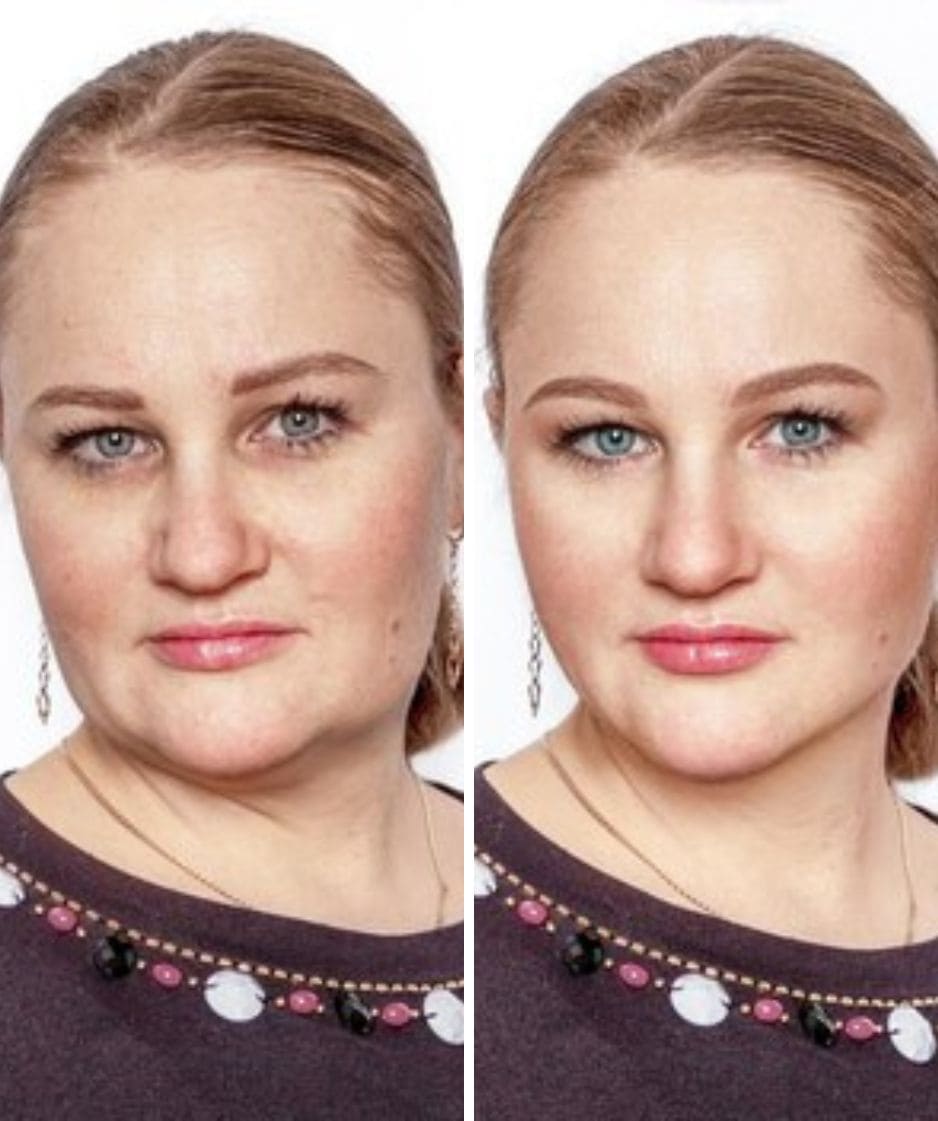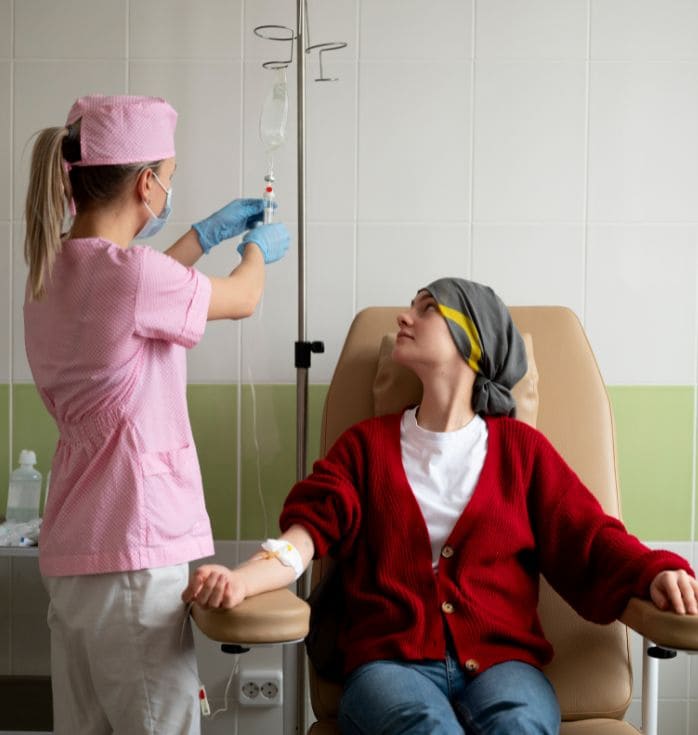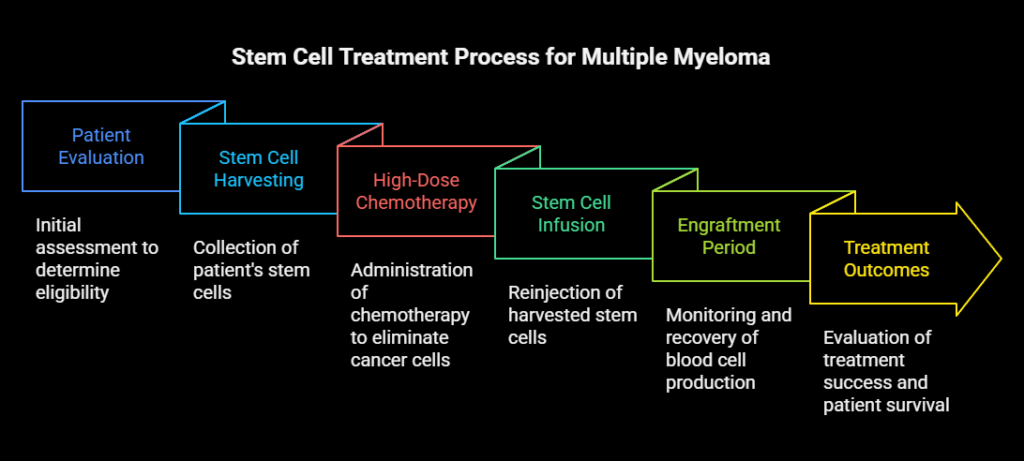

Stem cell treatment for multiple myeloma in Colombia costs 50-70% less than similar procedures in the United States and Germany while maintaining high medical standards throughout the process. Leading facilities like Regencord Pereira charge between $10,000 and $20,000, based on the specific therapy type patients choose. This makes multiple myeloma bone marrow transplants more accessible to patients seeking affordable yet high-quality care.
Colombia has become a trusted destination for stem cell therapy with its decade-old medical facilities and skilled specialists. Patients can choose between two main treatment options. Autologous therapy uses the patient's own stem cells and costs $10,000-$15,000. Allogeneic stem cell transplant with donor cells ranges from $15,000-$20,000. Colombia's National Institute of Food and Drug Surveillance (INVIMA) regulates these procedures to ensure patient safety and treatment effectiveness.
This comprehensive guide covers stem cell treatments available at Regencord Pereira for multiple myeloma. You'll find detailed cost breakdowns, treatment procedures, and expected outcomes for 2025.


Multiple myeloma starts in plasma cells, which are white blood cells that normally make antibodies to fight infections. Once they become cancerous, these cells grow faster in the bone marrow. They push out healthy blood cells and create abnormal proteins that harm different body systems, including the immune system.
Multiple myeloma affects several body parts, but it mostly affects the spine, pelvis, rib cage, and skull. Myeloma cells build up in bone marrow and disrupt the bone’s normal structure. They boost the activity of cells that break down bone tissue. Small holes called lytic lesions form and make bones substantially weaker, which leads to a higher risk of fractures. Bone damage or loss affects about 85% of people with multiple myeloma.
Stem cell transplantation (SCT), also known as bone marrow transplant, gives patients healthy hematopoietic stem cells to replace damaged ones after strong chemotherapy. Patients get "conditioning treatment" with chemotherapy to kill cancer cells before the procedure. Doctors put the harvested stem cells into the bloodstream through IV infusion. These cells find their way to the bone marrow and start making new blood cells - doctors call this "engraftment." The engraftment usually happens within 30 days after transplant, but it can take more time. This process helps restore the patient's immune system, which is crucial for fighting cancer.
We use two main types of transplants to treat multiple myeloma:
Autologous transplants remain the standard care option for most multiple myeloma patients. The complication rates stay low at 5% or less compared to allogeneic transplants.
Multiple myeloma patients go through several stages during their autologous stem cell transplant treatment. The transplant process aims to work as effectively as possible. Patients usually start this process after they complete their original induction therapy which lasts several months to lower myeloma cells.
The medical team performs a detailed evaluation to confirm if the patient is transplant-eligible. They conduct blood tests, bone marrow biopsy, chest X-ray, pulmonary function tests, electrocardiogram, and CT scans. These tests give them a full picture of the patient's heart, lung, kidney, and liver function. The next step involves placing a tunneled catheter into a large chest vein. This flexible tube helps deliver chemotherapy, medications, blood products, and stem cells without causing pain.
Patients receive growth factor medications such as granulocyte-colony stimulating factor (G-CSF) for 5-10 days before collection. These growth factors help stem cells move from bone marrow into the bloodstream. The pheresis process draws blood through a catheter and passes it through a specialized machine. This machine separates stem cells and returns the blood to the body. Each stem cell collection session takes 3-4 hours and might need repetition. The team then freezes harvested cells in liquid nitrogen through cryopreservation.
The treatment moves forward with high-dose chemotherapy after securing stem cells. Multiple myeloma patients typically receive melphalan. This strong treatment eliminates cancer cells but also destroys normal blood-producing stem cells in bone marrow. Patients often experience severe side effects like nausea, vomiting, mouth sores, diarrhea, and higher infection risk.
The medical team thaws and reinfuses preserved stem cells into the bloodstream 36-48 hours after chemotherapy. This process resembles a blood transfusion and takes 20-60 minutes. Patients then enter a crucial recovery period while waiting for engraftment. The transplanted stem cells start producing new blood cells within 2-6 weeks. Daily blood tests track blood cell counts during this time. White blood cells recover first, followed by red blood cells and platelets.

For decades, autologous stem cell transplant has been the standard treatment for multiple myeloma patients. This treatment gives patients better chances of survival and remission. The results show us how well it works and what makes it successful.
Clinical data prove that autologous transplants help patients live longer without disease progression. Recent studies from the National Cancer Institute reveal that patients who got ASCT lived 67.5 months without progression compared to 48 months for those who only took medication. The success rates have gotten better over the last several years. The 5-year survival rate jumped from 29% for transplants before 1997 to 68% after 2014.
About 15% of patients respond exceptionally well to the treatment and live more than 8 years after transplant without progression. However, multiple myeloma still can’t be cured completely. Most patients see their disease come back or get worse eventually, leading to relapsed multiple myeloma.
These key elements shape how well the transplant works:
Pros:
Cons:
ASCT remains the best first-line treatment, but new therapies show promise. CAR T therapy works really well, with response rates around 80-90% in patients whose disease came back or didn't respond to other treatments. Doctors recommend ASCT early in treatment while they save CAR T therapy for when the disease returns or doesn't respond.
The transplants control the disease for a long time. With maintenance therapy, patients often respond for more than four years. Scientists are now comparing these approaches as first-line treatments to figure out what works best for different patients.


Regencord Pereira has emerged as a groundbreaking center for stem cell treatment of multiple myeloma in Colombia. In its 11-year history, the center has treated over 5,000 patients. This unmatched experience makes Regencord Pereira a trusted provider in regenerative medicine for challenging blood cancers.
The center’s multidisciplinary team has specialists in genetics, pharmacology, biology, biotechnology, and bacteriology. Their scientific group also includes medical professionals of all specialties: radiology, orthopedics, anesthesiology, urology, and dermatology. Regencord’s physicians bring more than 30 years of expertise in regenerative medicine, genetics, biotechnology, and pharmacology to each case. This detailed knowledge base helps create personalized treatment approaches for multiple myeloma patients at different stages of their disease.
Regencord produces stem cells in its own innovative laboratory with specialized technology managed by skilled professionals. The center's sterile labs follow strict controls to ensure optimal cell quality for autologous stem cell treatment of multiple myeloma. The center's membership in the International Society for Cell & Gene Therapy (ISCT) gives them access to the latest cell therapy developments. This connection helps improve their treatment protocols for blood cancers like multiple myeloma.
The center follows strict quality standards, including ISO 9001, ISO 13022, ISO 22859, ISO 14644, and other relevant certifications. These standards ensure they can track every step of their stem cell production process. About 95% of their patients have shown positive outcomes with no reports of serious side effects. This safety record gives multiple myeloma patients confidence in the procedure's reliability and effectiveness.
Regencord offers expert, professional, and caring medical guidance. Their support extends from the original consultation through post-treatment follow-ups. The center also participates in clinical trials to advance multiple myeloma treatment options.
Cost Breakdown for Multiple Myeloma Treatment
To plan ahead, you need to understand the costs of stem cell treatment for multiple myeloma. The price tag changes based on your treatment plan, where you get it done, and what you specifically need.
The price of stem cell therapy varies a lot depending on how complex the procedure is. Autologous stem cell transplants for multiple myeloma cost around $60,000 for the first 100 days after the transplant. The costs are much higher in the United States. A complete stem cell transplant there typically costs between $350,000 and $800,000. Regencord Pereira's simple treatment packages start at $10,000. More complete protocols can reach $20,000, based on what approach you need.
The main treatment isn't your only cost. Multiple myeloma needs ongoing care that averages $5,500 per month during the continuing care phase. Patients usually see their costs follow a U-shaped pattern. They spend about $11,000 monthly during early treatment. This drops during maintenance and then goes up again to around $6,300 monthly in the final phase. These numbers include follow-ups, medications, and managing any complications that might come up.
Medicare pays for stem cell transplants only for stage 2 or 3 multiple myeloma under specific conditions. You need to be newly diagnosed, show partial response to other treatments, and have normal organ function. Most private insurers call stem cell therapy experimental, which limits your coverage options. Many patients turn to other ways to pay:
Treatment costs vary widely across regions. European treatments achieve quality-adjusted life years at €29,232. Similar treatments in the US cost $133,401. Healthcare costs over 20 years range from €1,073,349 to €1,128,805 in Europe. The US costs are much higher, at $1,678,162 to $1,872,859. This big difference makes international treatment centers an attractive option for Americans who want quality care at better prices.
Stem cell transplantation for multiple myeloma has proven to be an effective therapeutic approach, especially when patients receive care at specialized facilities like Regencord Pereira. The disease remains challenging, but success rates have improved substantially. Recent transplants show 5-year survival rates of 68%. Patients who choose Colombia save money while getting treatment that meets international quality standards.
Regencord Pereira’s experienced medical teams, advanced facilities, and detailed care protocols make it a smart choice for multiple myeloma treatment. Their track record speaks for itself – a 95% positive outcome rate and zero reports of serious side effects show their steadfast dedication to patient safety and treatment success.
Quality care should be within everyone’s reach. Treatment costs in the U.S. can go beyond $800,000, while Colombian facilities provide the same services for $10,000-$20,000. This big difference in cost, plus various financing options, helps patients concentrate on getting better instead of worrying about money.
Getting better from multiple myeloma depends on picking the right medical partner. Regencord Pereira’s exceptional experience spanning over a decade, modern facilities, and proven results make it a trusted destination. Patients can get effective stem cell therapy here at reasonable costs. Take the first step toward recovery— Contact Regencord Pereira today for a consultation!
3-Step Process for Stem Cell Treatment for Arthritis in Hands
Stem cells are unique cells with the ability to develop into various cell types and repair damaged tissues. They are used in regenerative medicine, including treatments for cancer, neurodegenerative diseases, and injuries. Sources include bone marrow, cord blood, and embryos.
(888) 540-4101
Begin your journey with us today! Call us at (888) 540-4101 or complete the form to learn more.


